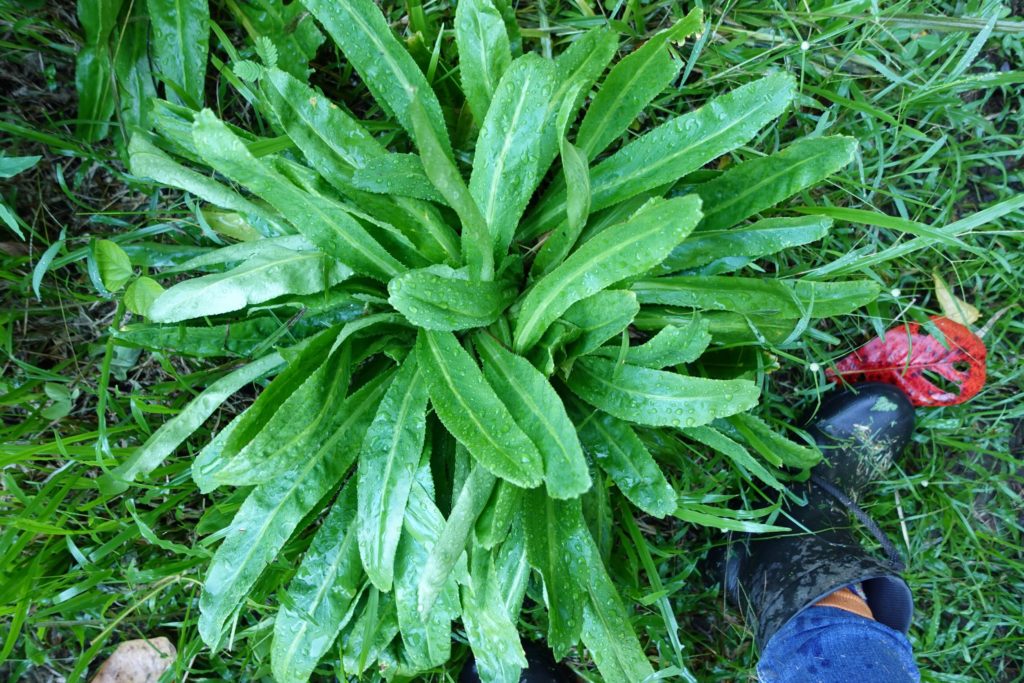Somewhere in Bacolod, a backyard that was once barren is turned into a flourishing food forest mostly filled with perennials.
It is spearheaded by Jo Anne V. Coruña, a writer, visual artist, permaculture practitioner and educator, and a podcast co-host.
If you haven’t read Coruña’s journey yet, click here.

This woman of many titles provided five simple yet helpful tips to grow a food forest that gardeners, new or experienced, can also follow.
Be humble. “We do not and cannot know everything. Along with this tip is the advice to be patient,” she said.
She pointed out that some things from our perspective may look like they need fixing or removal, but acknowledging that every living creature is intrinsic to the ecosystem helps us to learn how nature works.
Case in point, when Coruña was still a beginner, she was very cautious about pests like aphids. Over time, she realized that what many view as pests have a role to play in the ecosystem.
“Aphids will attract predatory insects, which will control their population. I don’t really have to do anything but let nature balance herself. Of course, I also acknowledge the fact that I am privileged enough to not need to provide for my family based solely on what we’re growing in our food forest, so a few plants lost to aphids or other insects won’t mean hunger for us.”
She continued, “I have the privilege to wait it out and let nature regain balance and I have to acknowledge that this privilege is, unfortunately, not available to all.”
Moreover, Coruña also used to be scared of spiders as a kid, which somehow built a wall between her and the natural environment where spiders can be found. However, ever since she started the food forest, she learned to co-exist with them.
“I know now that they are actually one of the best allies one can have in the garden. Once I see a spider living in a certain plant, I know that plant will most likely thrive,” she added.
Compost, compost, compost. Make use of kitchen scraps such as vegetables and fruit peels, and other organic materials to feed the soil. Enriching the soil, according to her, must be the utmost priority if one wants to have healthy plants.
Grow perennials. Perennial plants make it easier to grow food and at the same time, build a more sustainable ecosystem for the wildlife. Coruña noted that they can also sequester much more carbon in the soil, which enables everyone to take part in mitigating the climate crisis.

Mulch. Mulching preserves the soil and the beneficial organisms that live in it. She suggests using what is readily available and abundant.
Grass clippings, wood chips, dried leaves, and rice hull are some of the materials a gardener can use. Growing ground covers is also preferred.
Coruña stressed that it is important to research well to determine what suits one best. Remember that there’s no one-size-fits-all and everything has upsides and downsides.
“While I considered using rice hulls as mulch, I’ve heard other people’s experiences of using them and having them blown away by the wind and other issues.”
She remarked, “Since we had grass clippings anyway, I decided to go for that and observe if there would be any issues, and so far, grass clippings work for our food forest. However, I also heard other people disliking grass clippings as mulch since rodents or snakes can nest in them.”

Observe. Books, articles, and videos are excellent sources of information. Coruña believes this, too, but she also believes that nature is the best teacher.
She says that each garden or growing space is unique. Observing what goes on in one’s growing place allows one to identify effective approaches and solutions for their own situation and environment.
These are just some of the things that keep Coruña’s garden growing and a lot of it has to do with letting nature take its course. Something that we can perhaps learn from.
Photos courtesy of Jo Anne V. Coruña
For more information, visit amidst the green

